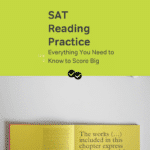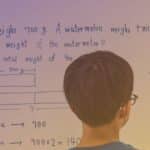Note: This post has been updated to reflect changes to the SAT beginning in March 2016 (aka the “New” SAT).
Have you ever found yourself reading the same sentence or paragraph over and over? It doesn’t have to be when you’re going through something as dry as an SAT reading passage; it might even happen with something you’re reading for fun, like a magazine, a book, or a blog post. (Is it happening now?)
Even if we’re supposed to be enjoying it or we’re trying really hard to pay attention, sometimes our eyes get stuck in what seems like an infinite loop. We look at the words, sure, but they don’t do anything. They don’t mean anything. So we look at them again, and…huh?…still nothing. Personally, I’ve gone through whole pages like that, reading on autopilot, then suddenly realized that I’d soaked up a whole lot of nothing in the process.
The danger of this happening on your SAT is huge, and there isn’t a second to waste.
Why SAT reading can be boring
Personally, we think Reading passages on the new SAT are far more interesting than they used to be. The test has moved light years away in this sense; on the old test, it sometimes almost felt like the test rewarded students with a high tolerance for tedium more than anything else, now you might even find that you learn some cool things as you go. While this is a huge improvement, you’ll probably still find yourself bored with some topics. The official areas that SAT reading passages draw from are social sciences, natural sciences, humanities, and literary fiction, which is a pretty broad scope. That includes just about everything academic, excluding math. But none of those things include Kim Kardashian or Bruno Mars, so unfortunately, so there’ll be a lot passages that are pretty dull.
So how do you make yourself care? Other than reminding yourself of the importance of the SAT, of course.
How to stay sharp
The best way to stay on task is to focus on note taking. But that doesn’t mean just mindlessly copying down details in the margin as you read through. The kind of notes that will help you focus are structural notes. You should be focusing on what the function of each paragraph is as you read through the passage. With the exception of fiction, SAT reading passages will pretty often follow a predictable pattern of introducing a topic, explaining some context or history, giving some specific details on the topic, and wrapping up with some more general thoughts on the main point. The truth is, that’s most non-fiction writing in a nutshell, including your essay.
So you should constantly be asking yourself questions like these:
- What’s the main topic going to be?
- Is this background information?
- What information in this paragraph is the most significant?
- Does this paragraph agree with the previous one?
- Will the author return to his point in paragraph 2?
- Does the conclusion have a different message than the introduction?
Constantly asking yourself why the author wrote each paragraph and how it relates to the rest of the passage is the best way to stay involved. If you keep trying to get blueprints for each passage jotted down in the margins, you’ll be a lot more stimulated.
Read with a pencil in hand at all times.





